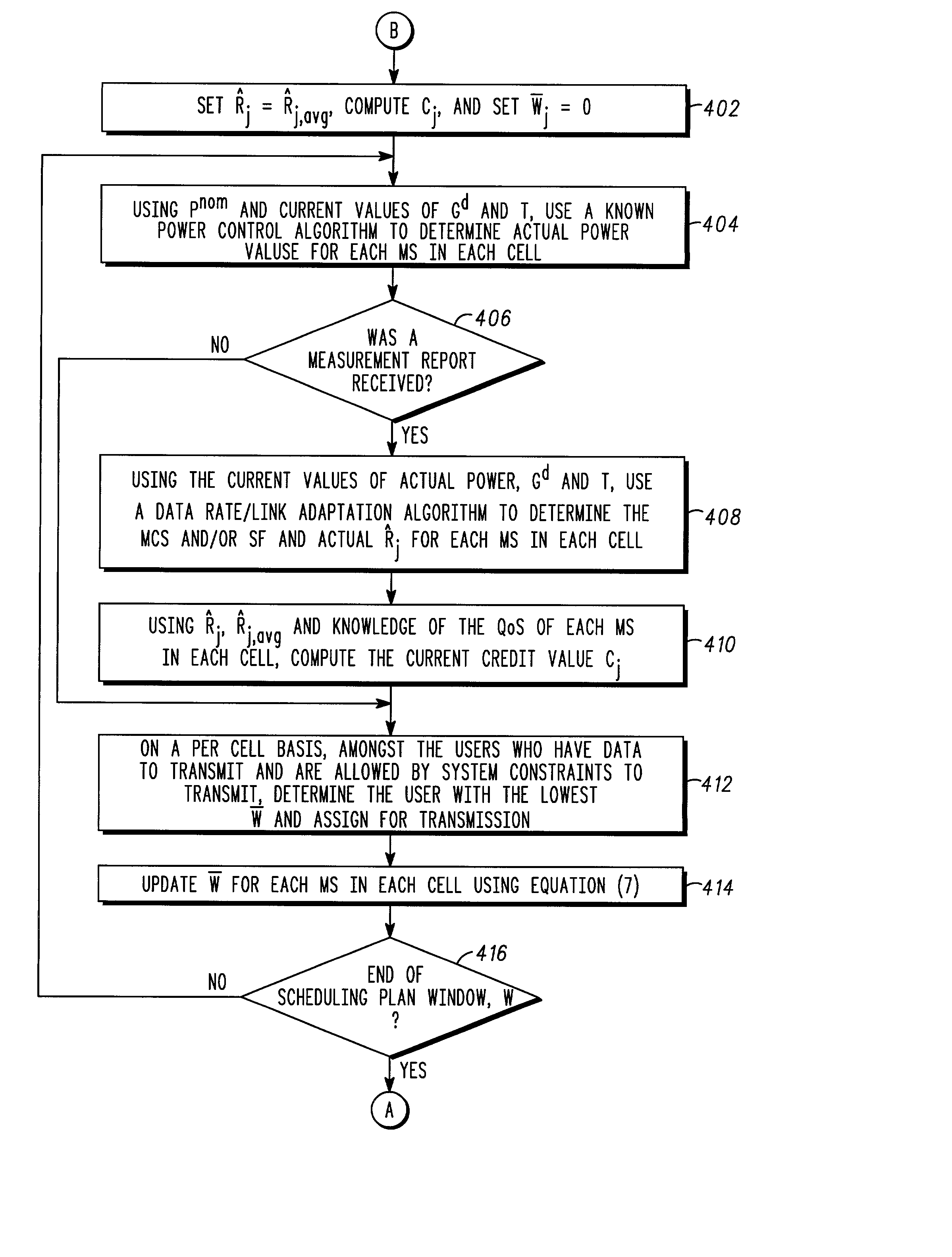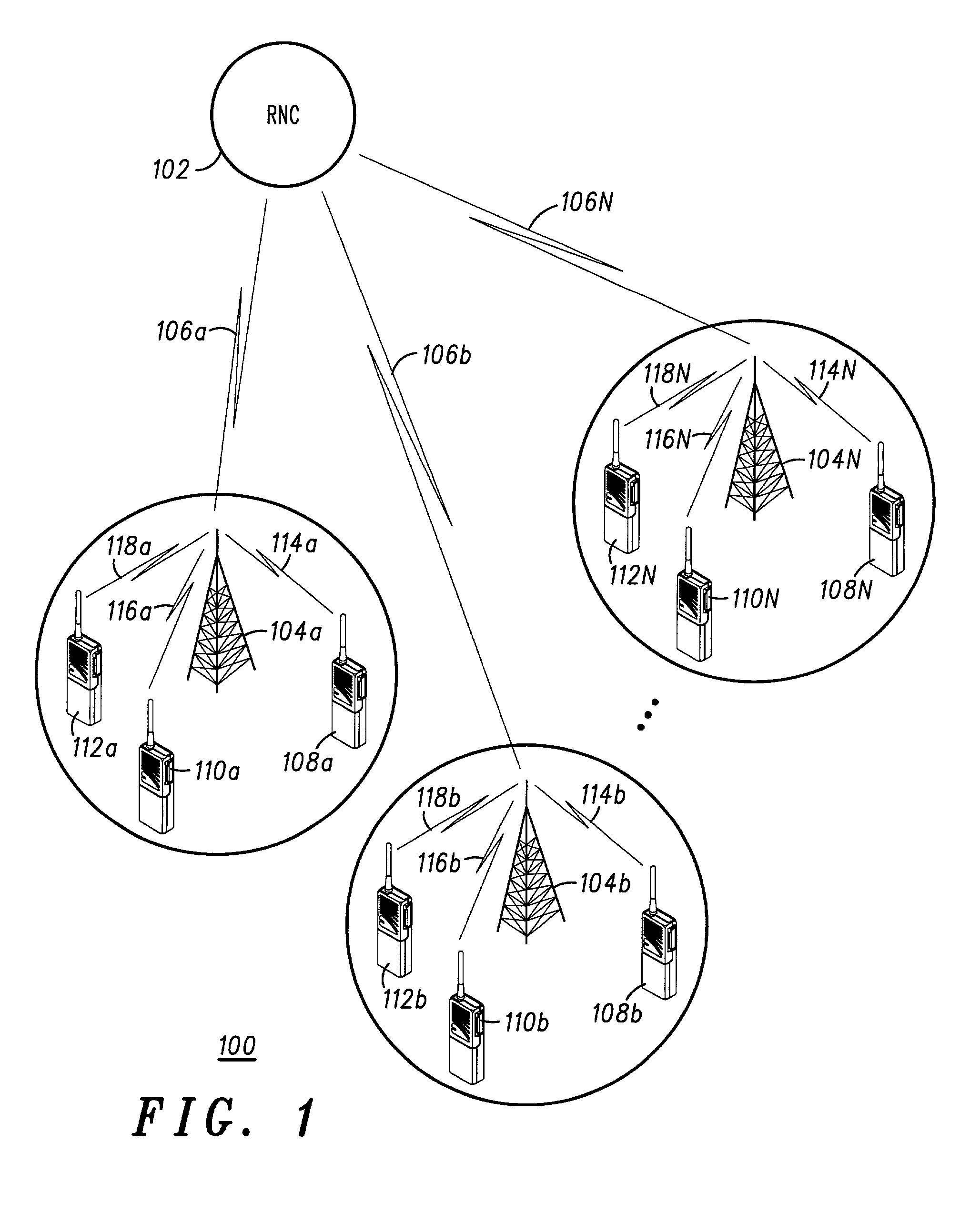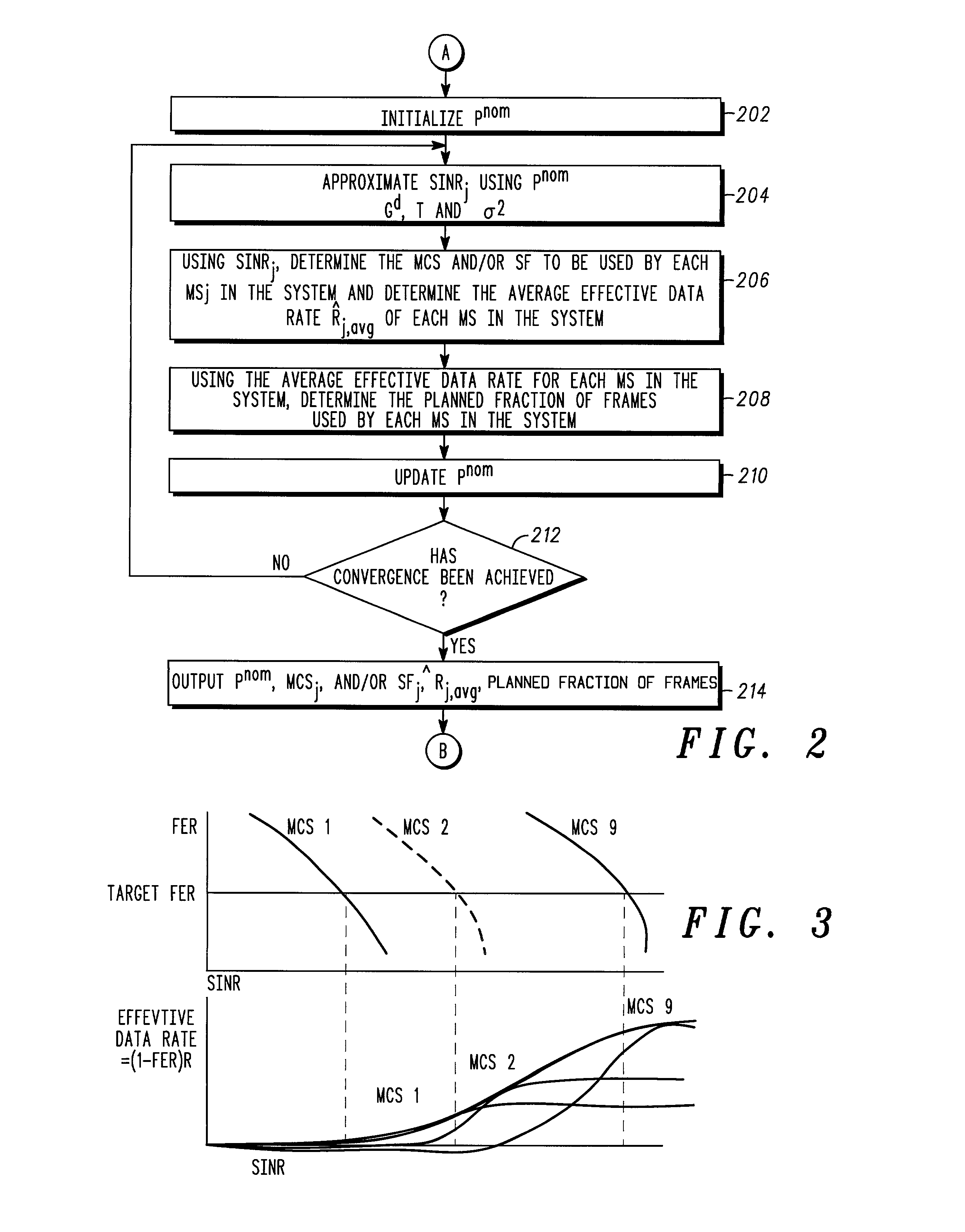Method for packet scheduling and radio resource allocation in a wireless communication system
a wireless communication system and packet scheduling technology, applied in the field of communication systems, can solve the problems of inconvenient implementation of packet scheduling, inability to change the relative emphasis between system efficiency and the demand of wireless access nodes, and limited packet level
- Summary
- Abstract
- Description
- Claims
- Application Information
AI Technical Summary
Problems solved by technology
Method used
Image
Examples
Embodiment Construction
[0010] The present invention provides in a communications system comprising a plurality of cells, each cell having a base station and a plurality of mobile stations, a method of scheduling packet transmission comprising the steps of: a) determining a nominal power level for all base stations in the system; b) determining an average effective data rate for all mobile stations in the system; c) using the transmit power level and average effective data rate to determine a tentative transmission schedule for each of the plurality of mobile stations in the system; and d) modifying the tentative transmission schedule using current radio conditions in a particular cell to determine an actual transmission schedule for each mobile station in the particular cell.
DESCRIPTION OF THE EMBODIMENT
[0011] The preferred embodiment of the present invention performs packet level transmission scheduling while considering radio resource allocation at the wireless access node. The invention offers gains ov...
PUM
 Login to View More
Login to View More Abstract
Description
Claims
Application Information
 Login to View More
Login to View More - R&D
- Intellectual Property
- Life Sciences
- Materials
- Tech Scout
- Unparalleled Data Quality
- Higher Quality Content
- 60% Fewer Hallucinations
Browse by: Latest US Patents, China's latest patents, Technical Efficacy Thesaurus, Application Domain, Technology Topic, Popular Technical Reports.
© 2025 PatSnap. All rights reserved.Legal|Privacy policy|Modern Slavery Act Transparency Statement|Sitemap|About US| Contact US: help@patsnap.com



